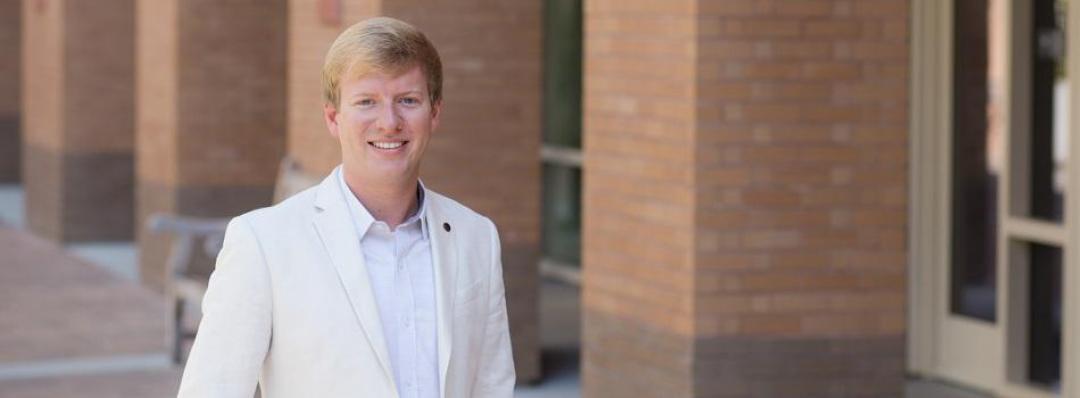
Ph.D. student teams up with Irvine PD chief -- a Social Ecology alum -- to study public perceptions of police.
Rylan Simpson wanted to know: when people spot a police officer, what do they judge: the officer, their attire, their mode of transportation, or their expression?
In the spring of 2015, the question seemed especially relevant, and continues to be today as some sectors of the public view police departments nationwide with intense scrutiny. Police behavior – both good and ill – has much impact on officers’ reputation, but Simpson, a Ph.D. student, sought to find out if attire and other aesthetic factors also made a difference.
So he approached the Irvine Police Department to discuss photographing officers in a variety of gear for an academic study testing his question.
"I came in thinking I was asking for a lot. I wasn’t sure I was going to be able to get that," recalls Simpson, who is studying criminology, law and society.
But the Irvine PD was enthusiastic. Chief Mike Hamel, who was deputy chief at the time, was already familiar with the School of Social Ecology because he is an alumnus who graduated in 1992 and did a field study at the Irvine PD during his senior year. Hamel even suggested expanding Simpson’s study to include how the public perceives officers of different races, and suggested additional attire options, such as sunglasses and baseball caps.
Simpson worked with the Irvine PD to take thousands of photographs, changing, among other things, officers’ attire (uniform or white t-shirt and blue jeans), patrol method (vehicle or foot or bicycle), and facial expression (smiling or stern). He held all other variables constant, such as the officers’ body posture.
For the last two years, Simpson has shown hundreds of experiment participants photos of the officers and gauged their reactions, as part of his Police Officer Perception Project.
So far, Simpson has found, for example, that officers are perceived more favorably when uniformed or smiling, that baseball caps don’t exhibit any significant impacts on perceptions of officers, and that officers on bicycles are viewed very favorably. Simpson published one article with the results in July in the Journal of Experimental Criminology, and has more planned.
All the while, he’s shared the results with the Irvine PD, and other police departments in Southern California and around the world. The results have given Chief Hamel confidence in allowing officers to wear baseball caps in more circumstances, and to increase bicycle patrols.
Such empirical research, Hamel says, can help practitioners such as police officers to fact check and examine assumptions, and not rely solely on intuition or past experience. But results do little good for practitioners when researchers conduct studies in a vacuum, without paying attention to practitioners’ experiences.
"If you do it right, if it truly is a partnership, academia can inform policy and help law enforcement do its job better," Hamel says. "Research can help us drive our practices and policies to make us more effective, make us more efficient, and make us more customer-service oriented."
Researchers and practitioners each bring something to the table: researchers have curiosity, expertise, knowledge, connections, know-how, and credibility. Practitioners have in-field experience and the data researchers need.
But partnerships sometimes require e overcoming assumptions about the others’ motives. The truth is that "academics and practitioners both have the same end game and they both want to ensure the law enforcement profession is serving the public in the best possible way," Hamel says.
Those partnerships still have to be initiated, however, and researchers can take the first step.
"You don’t know if you don’t ask," Simpson says. "It sounds cliché. A good project that is well-rehearsed and shows value is going to be well-received. Practitioners have an important role in this broader research question. Let them engage in the role and the conversation."
-September 20, 2017